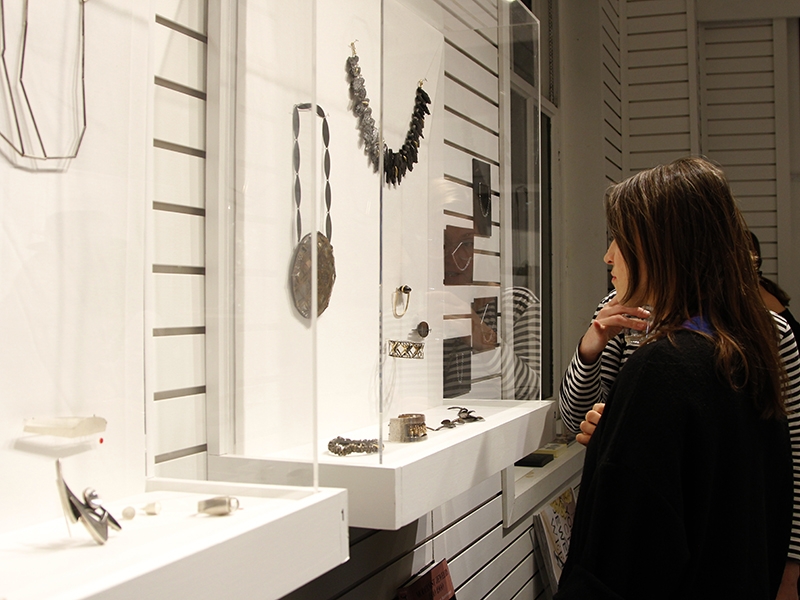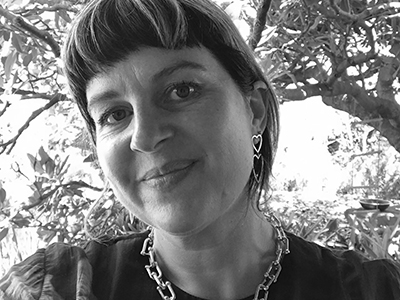The Jewelry Library (TJL) is a gathering place that is—like other libraries, which have evolved over the past few decades—about many different things. It focuses on jewelry literacy and contains books and catalogs for study and research, but also hosts jewelry exhibitions, artist talks, and jewelry-related events, and encourages visitors to handle the jewelry pieces in its collection. In this interview, founder and director Karen Davidov talks about her personal history, professional connections, and current role in working with community to research and develop this unique multivalent space for the learning and appreciation of current jewelry practice, jewelry histories, and their contexts.
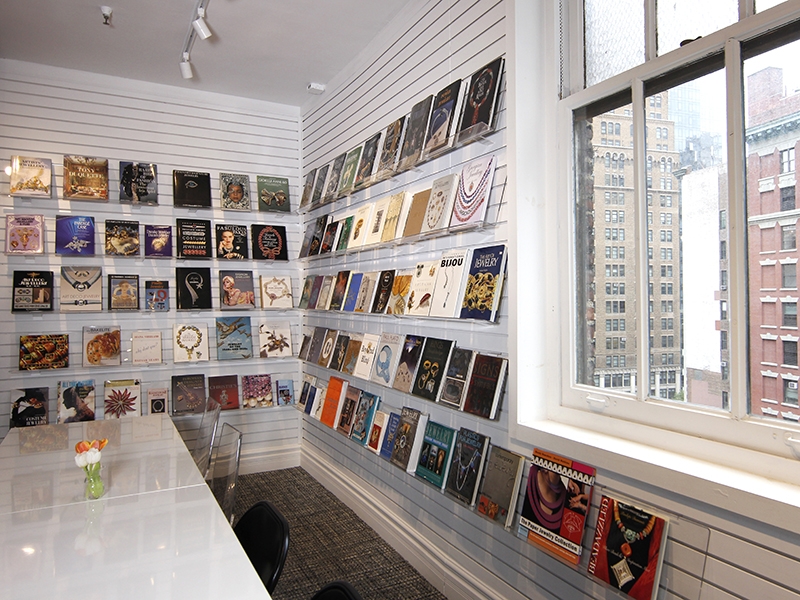
Meredith Turnbull: The Jewelry Library is a unique organization. Can you tell readers about its structure and some of the activities it undertakes?
Karen Davidov: The Jewelry Library came out of my work with libraries in different cities. I’ve seen how libraries have evolved over the past two decades in response to community needs. I wanted to explore the idea of a library, with the community as a resource for learning, and I knew something about the jewelry community not only as a long-time dealer in 20th-century decorative arts, but as the daughter of a jewelry collector and writer. My mother, Corinne Davidov, co-wrote two books on jewelry with Ginny Redington Dawes, The Bakelite Jewelry Book and Victorian Jewelry: Unexplored Treasures.
It was important to have a physical space where people could gather. I work with my husband, an architect, in a midtown building that still houses many costume jewelry manufacturers and showrooms, so when a small space opened up that had once been a jewelry showroom, it seemed perfect for books, exhibitions, and an archive, with room for study and research as well. Our design office on the top floor, a loft-like space, becomes The Jewelry Library’s Great Room on evenings and weekends for talks and other events.
This first year, we’re exploring and evolving. We’ve partnered with galleries and curators such as Mark McDonald and Sienna Patti for our exhibition, The Kinship Between, which took place during NYC Jewelry Week (NYCJW), and most recently with Patti Bleicher, of Gallery Loupe, to present Kiff Slemmons’s recent work in Paper as Protection and Gift. We had our first “Jewelry Detectives” talk with Medill Harvey, of the Metropolitan Museum of Art, and Lori Zabar, an independent curator and Met researcher, who brought to light the work of Eda Lord Dixon, an American jeweler at the turn of the century.
This summer, we’ll be showcasing Penny Morrill’s new book, Dreaming in Silver, and we’re launching it with a conversation about surrealism in Mexican jewelry with Morrill, Christina DeLeon (associate curator of Latino design at the Cooper Hewitt), and Mary-Anne Martin, the renowned dealer and expert in Latin American art. On view will be some of the pieces from the book, and we’ll offer a special collection for sale online, with additional programming throughout the summer. This fall, we’re working with some of the local colleges and high schools on their jewelry projects, and of course getting ready for the next NYC Jewelry Week.
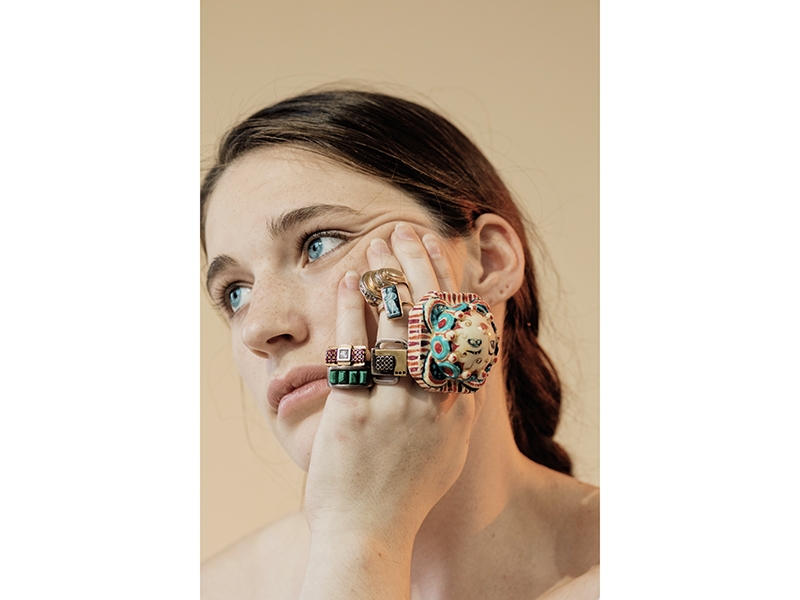
One of the remits of TJL is to encourage literacy around the discipline of jewelry and jewelry practices. How does the Library achieve this aim?
Karen Davidov: We approach the idea of literacy from many directions. Material intelligence comes from handling jewelry, from taking it out of a case and feeling the weight of it, trying it on to see how it works on your body, wearing it and placing it. Seeing things in different contexts also aids in this, and we think a lot about the relationships between vintage and contemporary works, what you can learn from looking at them side by side, and what they have to say about one another. Literacy comes, too, from talking to makers—or to scholars, historians, and collectors—and understanding technique and process. And just looking at jewelry in museums, in stores, and, of course, in books. I grew up learning a lot about jewelry from looking through Graham Hughes’s Modern Jewelry, which we had in our house. At TJL, there’s always a selection of books on view tied to what we’re showing. For Kiff Slemmons’s show, we had titles from her own library, things that continue to shape her, so it was a peek into the artist’s mind as well. Literacy comes through the making of connections, and at TJL we facilitate these connections, tapping into what’s going on in an artist’s world and what’s going on around town. We point people toward this book and this piece, or that event and that exhibit, and bring people together, students and experts, makers and wearers.
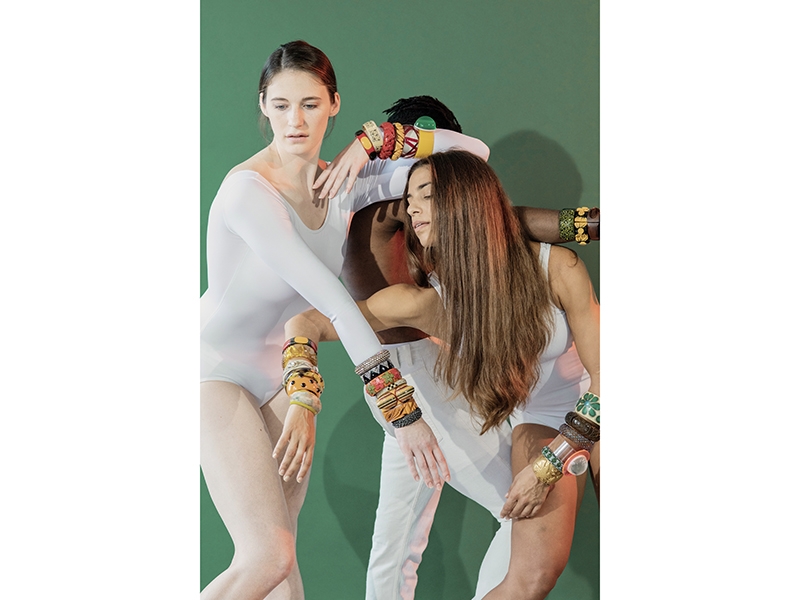
TJL also has a jewelry collection. What’s the size and scope of this collection? Can you give some examples of the artists represented in it? How do you share it with a broader audience, and what are your objectives when acquiring new works to add to this collection?
Karen Davidov: We’ll be cataloguing our collection this summer. It is definitely eclectic, more of a “personal collection,” like a peek into someone’s jewelry box. There are family heirlooms, pieces acquired from travels, explorations of certain materials and forms and periods, the work of a particular artist. What it is now is an example of the way many of us acquire jewelry: piece by piece, without overall objectives except for our personal taste.
Our collection is made up of mostly nonprecious materials, from Victorian-era mourning jewelry to plastics of the 1930s, but we also have the work of many mid-century modernists in silver, and 20th-century fashion jewelry as well. There’s some contemporary work from the 1980s onward and we’ve been acquiring pieces since we opened in November, mostly the work of the artists we’ve shown. We’re examining the way we catalogue jewelry too. Does a piece have a great story with it? Who designed or made it? Who wore it? How was it found? And how does that all become part of the life of a piece?
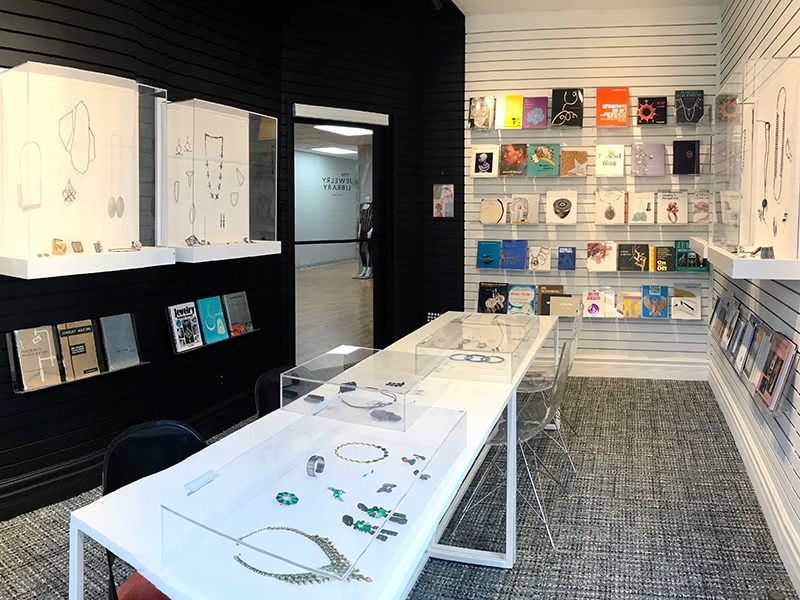
TJL also encourages research into its library and archive. What are some of your favorite books or texts in the library?
Karen Davidov: We post a favorite book from our collection on Instagram each week and pull out a quote or story about material or process. I love Jewelry Matters, by Marjan Unger and Suzanne van Leeuwen—it’s a jewelry literacy bible. And we just acquired a group of books and catalogs from the latter part of the 20th century that look at ancient and ethnic jewelry forms that I’m eager to share. I also have a collection of books about “making” jewelry, from the 1930s onward, and I wonder, like a chef discovering an old recipe in a vintage cookbook, if there’s a particular technique or way of doing something in one of them that might spark the interest of a young metalsmith.
Can you tell our readers about The Kinship Between, your project presented in partnership with New York City Jewelry Week in 2018? Will you be collaborating with NYCJW again this year?
Karen Davidov: Last summer I was speaking with Mark McDonald about doing a show during Jewelry Week around three mid-century women who were metalsmiths—Margaret De Patta, Ruth Roach, and Betty Cooke—and as we talked about their process and practice, and how they interacted with their customers, we wondered about contemporary women jewelers and if there were similarities in certain aspects of their work. Mark reached out to Sienna Patti, and they selected four contemporary jewelers—Noam Elyashiv, Raïssa Bump, Gabriella Kiss, and Rebekah Frank—who best exemplified, as Sienna put it, “a strength of vision and clarity” that connects all seven of these jewelry artists. It was a privilege and delight to work with Mark and Sienna and to meet Noam, Raïssa, Gabriella, and Rebekah, as well as Betty Cooke.
We’re looking at many different ways of collaborating with NYCJW this year, with both exhibitions and events.

TJL appears to actively examine the contributions of women artists to jewelry and metalsmithing. Is this an important part of your agenda as an organization? Do you also consider cultural diversity in the artists and artworks you promote as part of your mission?
Karen Davidov: We love great stories, and are especially interested in discovering and shining a light on the overlooked, both in history and in contemporary culture. That includes many women artists. In Mexican jewelry, we often think of William Spratling, Hector Aguilar, and Antonio Pineda when we think about the giants of the genre. This summer, we’ll be taking a closer look at the work of Matilde Poulat, a Spratling and Aguilar contemporary, and Anna Morelli, who worked in Mexico in the 1960s. Penny Morrill has done some amazing research in this area. Her new book, Dreaming in Silver, which I mentioned earlier, highlights many women’s stories.
Our mission is to build and cultivate a culturally diverse community around jewelry. To accomplish this, we try to go outside the confines of what we know, and whom we know, to actively seek out a wide array of collaborative partners and find ways we can work together. That includes working with new artists and artworks, but also producing “events” around jewelry. We’ve just launched The Scoop: Jewelry Stories and Ice Cream nights, which we hope to grow into an ongoing platform and showcase for the diverse jewelry stories we all have to tell.
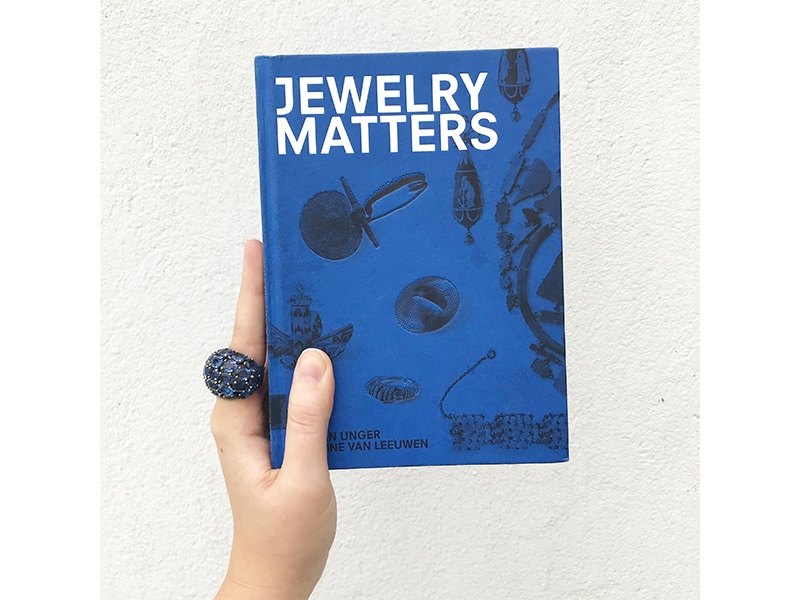
Finally, I’m sure there are many things that you research that would be of interest to our readers, but can you share something you’ve seen, experienced, or read recently that has inspired you?
Karen Davidov: I saw a terrific show on doorknobs during NYCxDesign in May. The variety of shapes, materials, textures, and concepts on view made an object we encounter every day suddenly full of possibility.
And I loved the exhibition Among Others: Photography and the Group, at one of my favorite places in New York—The Morgan Library and Museum. There were large family portraits, street photography, historical images of marches and protests, magazine spreads of writers and musicians, but particularly inspiring was how it touched on the nature of collection, as it reflected on all kinds of ideas around “grouping.” My personal favorite, as a Fab Four fan, were the individual photos of all four Beatles’ lips, by Jean-Pierre Ducatez, originally taken for an article called “Kiss Your Favorite Beatle,” in the September 1965 issue of 16 Magazine.
